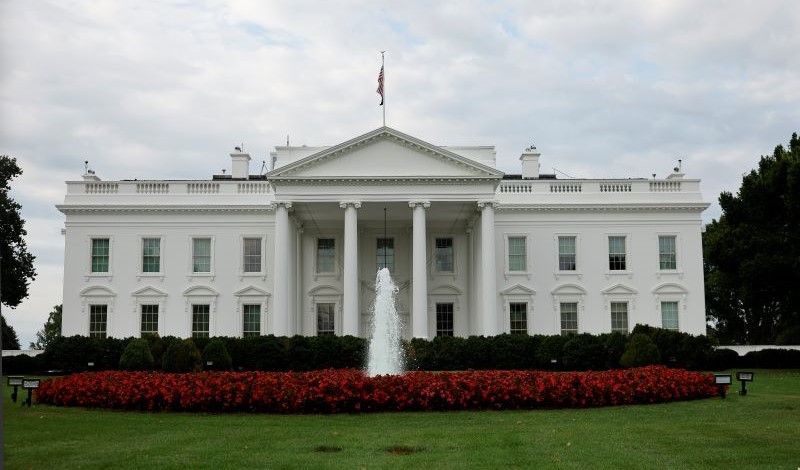
Experts reflect on a new book assessing Presidents’ impact on regulatory priorities and successes.
Food products sold on grocery store shelves throughout the United States now display uniform labels clearly listing nutritional content. New cars come equipped with safety features, such as seat belts and airbags. And in most U.S. communities, tap water is safe to drink.
According to a new book by John D. Graham, Presidents and their White House staffs deserve credit for their contributions to public health successes such as these.
In Regulatory Reform from Nixon to Biden, Graham chronicles 10 U.S. Presidents’ regulatory legacies. Drawing on his extensive research and experience, including his own service as the administrator of the Office of Information and Regulatory Affairs during the George W. Bush Administration, Graham makes the case that Presidents have long exercised strong influence over both congressional and agency regulatory agendas.
In Graham’s view, centralized White House oversight of regulatory policy offers several advantages, including unified and responsive leadership, access to the technical knowledge necessary for effective regulating, and democratic legitimacy. Graham contends that, at the same time, the legislative and judicial branches offer effective checks on presidential authority, reducing risks of authoritarianism.
Graham draws lessons from former Presidents’ successes and failures and identifies trends that have prevailed across the past 10 Administrations. For example, Presidents of both parties have sought alternatives to strict, top-down commands imposed on regulated parties. Presidents have also directed federal agencies to engage in some form of benefit-cost analysis, and each Administration has contributed to the overall expansion of federal agencies’ role in government.
The Regulatory Review invited scholars and other regulatory experts to comment on Graham’s new book on Presidents’ regulatory achievements and its proposals for future action. This series begins with an essay by Graham introducing his book. It then features six essays by leading regulatory thinkers reviewing his book before concluding with a responsive essay by Graham.
Although Graham’s book ends its coverage with the Biden Administration, some of the reviewers reflect on developments emerging during the second Trump Administration—including Graham himself in his concluding essay. A reader of the series, and of Graham’s book, will gain a broader perspective on whether the second Trump Administration’s regulatory agenda is following earlier trends or charting new ground.
This series features the following contributors: Edward J. Balleisen, a professor of history at Duke University; Gary D. Bass, president of GDB Consulting; Douglas H. Ginsburg, a judge on the U.S. Court of Appeals for the D.C. Circuit; John D. Graham, a professor at the Paul H. O’Neill School of Public and Environmental Affairs at Indiana University; Rick Melberth, formerly of OMB Watch; Jennifer Nou, the Ruth Wyatt Rosenson Professor of Law at the University of Chicago; Stuart Shapiro, dean of the Edward J. Bloustein School of Planning and Public Policy at Rutgers University; and Rena Steinzor, emeritus professor at the University of Maryland Francis King Carey School of Law.
Presidential Regulatory Reform
April 21, 2025 | John D. Graham, Indiana University
Presidents have played an important and sometimes surprising role in driving regulatory changes.
The Role of the White House in Regulatory Reform
April 22, 2025 | Douglas H. Ginsburg, U.S. Court of Appeals for the D.C. Circuit
President Reagan introduced comprehensive White House oversight of agency regulatory activities.
Transcending Partisanship in Regulatory Reform
April 23, 2025 | Jennifer Nou, University of Chicago
Graham’s new book highlights the challenges of and opportunities for regulatory reform.
A Fair, Complete Book but With Unworkable Solutions
April 24, 2025 | Gary D. Bass, GDB Consulting, and Rick Melberth, OMB Watch (formerly)
Graham offers a balanced history but misses an opportunity to reimagine the regulatory state.
Regulatory Reform from Nixon to Obama … and From Trump Onwards
April 28, 2025 | Stuart Shapiro, Rutgers University
The Trump Administration might alter the trajectory of the history Graham provides.
Regulatory Retrospection Amid the Smashing of Expertise
April 29, 2025 | Edward J. Balleisen, Duke University
The presidential influence chronicled in Graham’s magisterial book now threatens technocratic decision-making.
A Sweeping History of Regulation
April 30, 2025 | Rena Steinzor, University of Maryland
The Trump Administration may defy the lessons that Graham draws from his robust history of regulatory review.
Time Will Tell
May 1, 2025 | John D. Graham, Indiana University
Our system of checks and balances moves slowly—but hopefully effectively.



